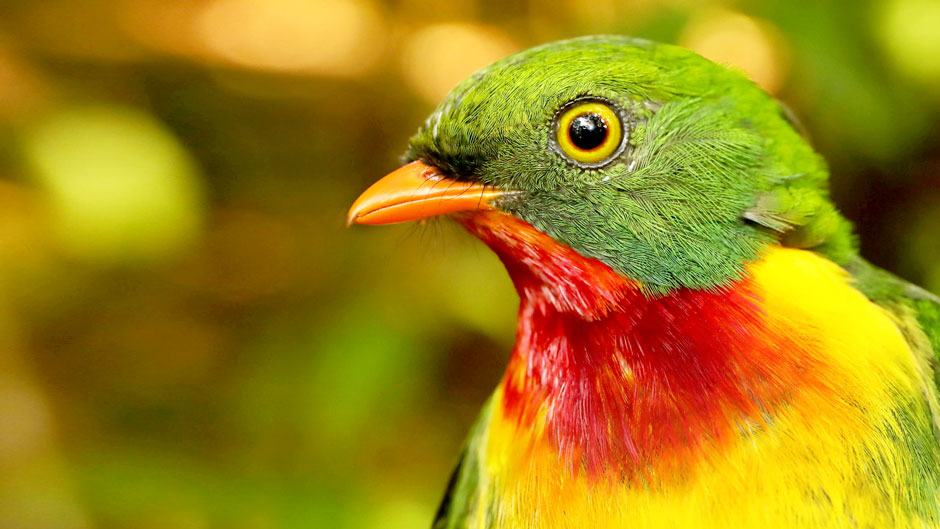In a new study investigating how rising temperatures are affecting plants and animals in mountain regions around the globe, researchers found that tropical species are shifting their ranges up mountain slopes at rates that are more than twice as fast as their temperate counterparts.
Published in Ecology Letters, the findings from a team of scientists from the University of British Columbia; the University of Miami; and the University of California, Santa Cruz; provide new insight into how species survival outcomes—and potential conservation strategies—may vary by geography as our world warms.
Members of the research team each brought their own expertise in studying these types of changes within plant and animal communities. Lead author Benjamin Freeman, a postdoctoral fellow at the University of British Columbia, has documented the shifting ranges of birds and other animals in mountainous regions of the tropics, while co-author Kenneth Feeley, associate professor and Smathers Chair of Tropical Biology at the University of Miami, has extensively studied the effects of climate change in tropical forests. Meanwhile, co-author Kai Zhu, a UC Santa Cruz assistant professor of environmental studies, has been researching the effects of climate change on North American forests along with his graduate student Yiluan Song.
Setting out to combine their insights into a new global perspective, the team analyzed data from forest surveys in mountainous regions in North, Central, and South America, as well as data from nearly 100 prior studies covering thousands of plant and animal species in mountain environments around the world. Their goal was to get a sense of how species were responding to rising temperatures and how these responses vary across latitudes.
Climate change threatens biological diversity across the planet in part because temperature is one of the environmental conditions that defines which areas are suitable for each species. The current warming rates due to human-driven climate change is much faster than many plants and animals can adapt. So, for some species, migrating to cooler regions may be the best chance for survival.
“Basically, species can tolerate these changes through adaptation or acclimation or, alternatively, they can shift their geographic distributions to minimize the climatic changes they experience,” Feeley explained. “If they fail to do either of these things, then eventually they will suffer and be at risk of extinction.”
For those species seeking colder temperatures on land, there are two main options. Plants and animals can either move great distances in latitude—away from the equator and toward the poles, where the sun’s energy is less intense—or, in mountainous regions, they can move shorter distances up to higher elevations, where temperatures are cooler.
Not all species can successfully make these migrations. In fact, Zhu’s prior research showed a “failure to migrate” in North American forests, where young trees did not seem to be establishing themselves in cooler habitats farther north. This new investigation shows that, in mountain regions, temperate forests are faring slightly better at making smaller upslope migrations. But these shifts still lag far behind the rate of warming.
“We know from observation that we have seen substantial warming already, but what we don’t see is responsiveness from temperate forest ecosystems,” Zhu said. “So that raises concern.”
In the study, the researchers say it is possible that temperate zone species may have more ability to respond to climate change by shifting the timing of seasonal life processes—like blooming or shedding leaves for plants and hibernation or seasonal migration for animals—rather than shifting in space. But it’s unclear if this strategy will be able to keep pace with changes in the environment as warming continues.
Meanwhile, higher rates of migration in the tropics might not necessarily be a good thing either. Freeman’s prior work showed that tropical birds are going all-in on the strategy of migrating upslope, and he is concerned to see this same trend in other species.
“In the tropics, these species really are zooming uphill as it gets warmer. And in the short term, that’s great because it means that they’re able to respond,” he explained. “But the problem is that mountains aren’t infinitely tall. Species can’t just keep shifting up forever because they’re going to run into the top of the mountain. It’s really like they’re on an escalator to extinction.”
And, as Freeman, Feeley, and their co-authors note in the study, that process seems to run much faster in the tropics, despite the fact that the magnitude of recent warming has actually been greater in temperate regions. One theory to explain these findings is that tropical species may be more sensitive to changes in temperature than their temperate counterparts, perhaps because seasonal variability is limited in the tropics.
But regardless of the cause, the study authors see this trend as a major conservation threat. After all, the tropics are a global hotspot of biological diversity. And tropical mountains, in particular, support a greater number of species than anywhere else on Earth. There are conservation steps that could help tropical mountain species in the near term—like preserving habitat corridors to aid upslope migration—but ultimately, the most meaningful action the researchers said we can take to protect tropical and temperate species alike will be to slow the rate of global warming.

